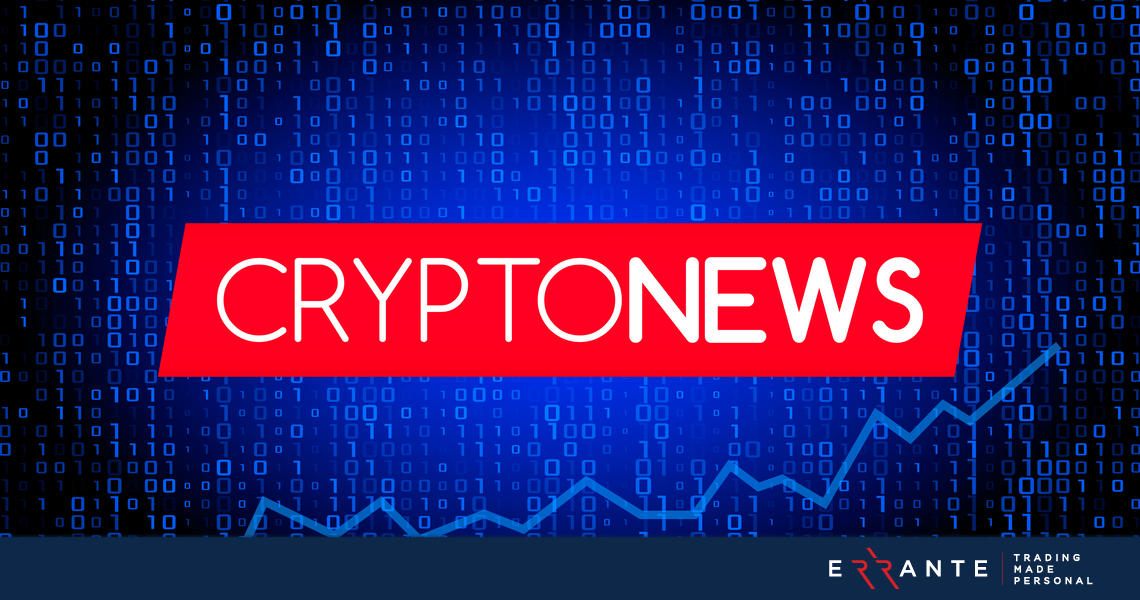The Current Developments and Patterns Shaping the Landscape of News in the Digital Money World
The digital money news landscape is going through significant improvement, affected by technological developments and moving regulative structures. With the implications of these patterns still unraveling, it comes to be vital to discover exactly how they will certainly form the future of financial journalism and the wider understanding of digital money.
Evolution of Financial Journalism
Emerging from the fast advancements in innovation and the digital landscape, the evolution of economic journalism has transformed exactly how details about markets, investments, and financial fads is shared. Conventional media outlets have actually significantly incorporated digital platforms, allowing real-time coverage and evaluation (copyright news). This change has resulted in a much more vibrant and receptive journalistic setting, where rate and precision are critical

In addition, the demand for thorough analysis and expert commentary has actually raised, triggering specialized economic journalism. This form of reporting focuses on data-rich web content that accommodates an audience looking for thorough insights into complicated economic markets. As a result, the landscape of financial journalism remains to progress, stabilizing the requirement for prompt news with the necessity of detailed, accurate reporting.
Rise of Decentralized News Operatings Systems
The landscape of economic journalism is undergoing significant change with the increase of decentralized information systems - copyright news. These platforms take advantage of blockchain modern technology to develop an extra clear and equalized environment for news dissemination, particularly within the digital currency sector. By removing centralized authority, decentralized news systems empower contributors and users to engage straight in the news development and sharing process

Moreover, decentralized news platforms can boost depend on amongst users by supplying proven sources and unalterable documents of content. This transparency is crucial in a market usually marred by false information. As these systems remain to acquire grip, they might reshape standard media versions by focusing on customer engagement, fostering a culture of responsibility, and potentially redefining the partnership in between information companies and their target markets in the electronic money world.
Impact of Social Network on News

The immediacy of social networks enables information to reach a wider target market, allowing for varied perspectives and promoting a more educated public. This rapid spread of info comes with difficulties, including the capacity for false information and unverified insurance claims find to multiply. Users should navigate an intricate environment where identifying trustworthy resources from sensationalist narratives becomes significantly challenging.
In addition, social media algorithms can produce resemble chambers, where customers are exposed mainly to point of views that reinforce their existing beliefs. This can distort public understanding and impact market characteristics within the electronic currency industry. Because of this, while social networks offers as an effective device for information circulation, it additionally demands a crucial technique to info intake and a focus on validating sources to guarantee accuracy and dependability in reporting.
Regulative Modifications and Their Ramifications
As social networks plays a crucial duty in forming public discussion around electronic money, regulative modifications are progressively affecting this vibrant landscape. The evolving regulatory framework bordering electronic money is important for both market individuals and the media coverage on these advancements. Governments and financial authorities worldwide are implementing more stringent laws to boost customer security, avoid fraud, and mitigate threats related to money laundering and terrorism financing.
These regulatory changes can dramatically affect market habits, signaling an extra fully grown and legitimized digital currency ecological community. The introduction of more stringent Know Your Customer (KYC) and Anti-Money Laundering (AML) laws can lead to higher accountability for exchanges and service providers, promoting a more clear market environment. They may additionally hinder technology and drive some operations to much less regulated jurisdictions, making complex the landscape for investors and regulatory authorities alike.
Furthermore, as governing bodies issue guidelines and structures, information outlets must adapt their reporting to mirror these changes precisely. This demands continuous tracking of the governing landscape, making sure that the details disseminated is trusted and timely, thus forming educated popular opinion on electronic money in this rapidly developing market.
The Duty of Information Analytics in Reporting
Information analytics has actually ended up being a crucial device in the journalism landscape, specifically in the world of electronic currency reporting. As cryptocurrencies and blockchain innovations generate vast amounts of information, reporters are progressively leveraging analytical tools More Help to draw out insights and present engaging stories. This shift enables press reporters to determine fads, screen market motions, and uncover patterns that could not be quickly noticeable with conventional reporting methods.
Making use of information analytics improves the accuracy and deepness of protection in electronic money information. By employing formulas and information visualization techniques, reporters can produce interactive graphics and dashboards that illuminate his explanation complex details, making it a lot more available to a broader target market. Data-driven coverage assists in real-time updates, allowing news electrical outlets to respond swiftly to market changes and governing modifications.
Moreover, analytics can assist in fact-checking and verifying cases, which is essential in a sector vulnerable to false information and speculation. As the electronic currency landscape remains to advance, the assimilation of data analytics right into reporting practices will certainly continue to be critical, encouraging reporters to deliver educated and prompt coverage that satisfies the needs of a tech-savvy readership. This pattern highlights the expanding value of data literacy amongst reporters in this dynamic field.
Final Thought
In conclusion, the electronic money information landscape is undertaking considerable improvement, defined by the development of monetary journalism, the appearance of decentralized information platforms, and the extensive influence of social media. Collectively, these trends will certainly proceed to form the future of information in the digital currency domain name.
 Kel Mitchell Then & Now!
Kel Mitchell Then & Now! Danielle Fishel Then & Now!
Danielle Fishel Then & Now! Nancy McKeon Then & Now!
Nancy McKeon Then & Now! Lisa Whelchel Then & Now!
Lisa Whelchel Then & Now! Nicki Minaj Then & Now!
Nicki Minaj Then & Now!